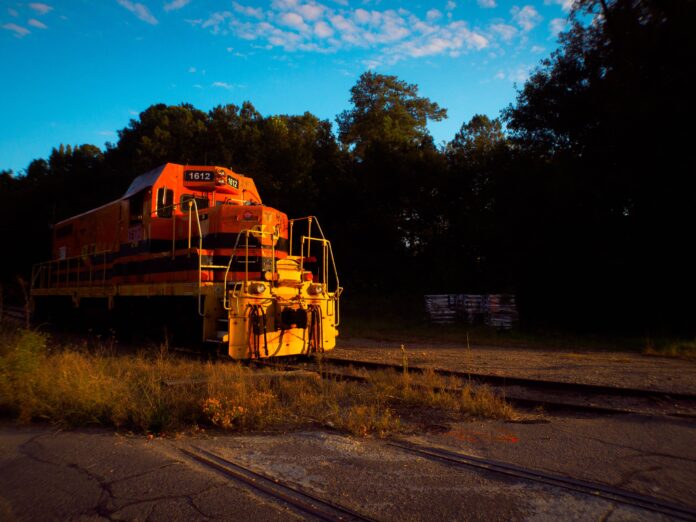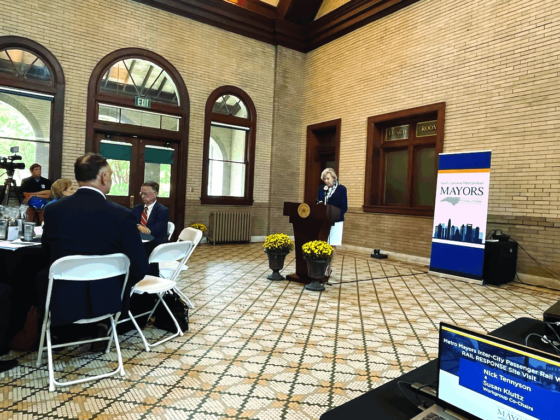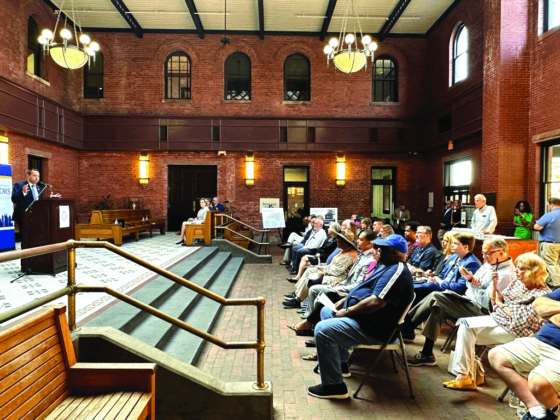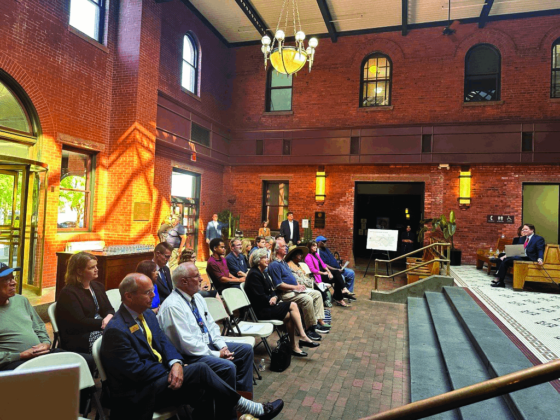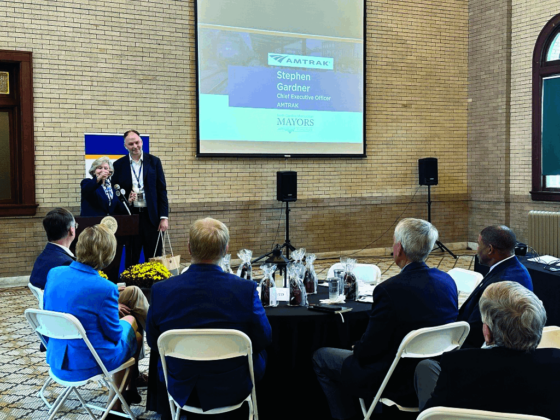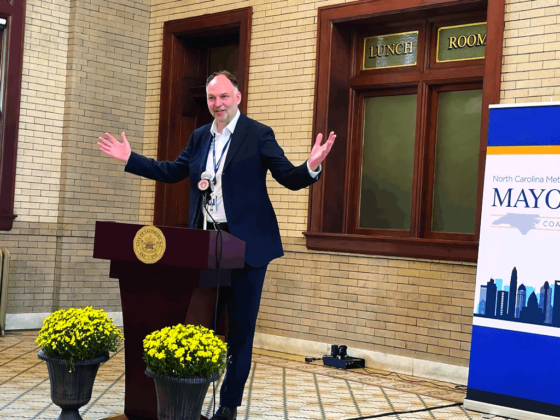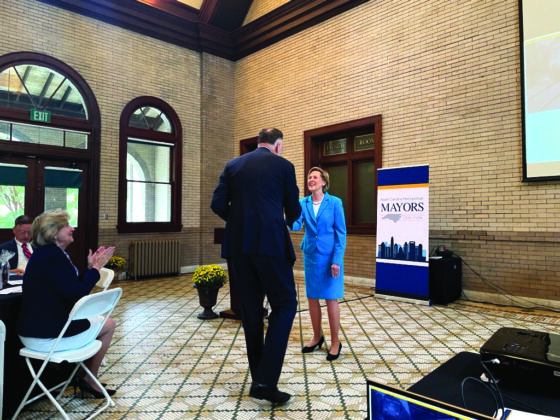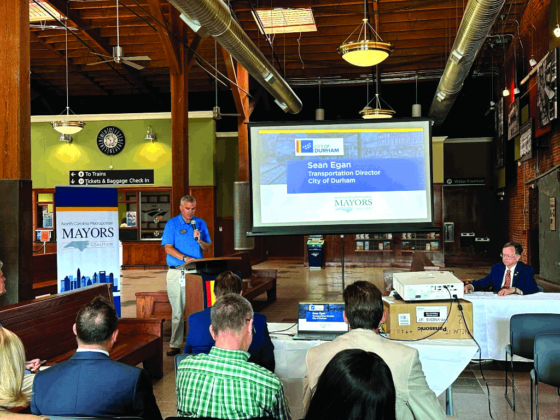Over late summer and fall, five cities across the state hosted meetings organized by Rail Response, a project of the North Carolina Metro Mayors Coalition, examining how more investment in intercity passenger rail can bring economic and other benefits to North Carolina.
Those meetings—held in Wilmington, Durham, Asheville, Rocky Mount, and Salisbury—were a rousing success, bringing together community leaders at each stop, as well as media coverage that brought more public awareness about the possibilities of intercity passenger rail expansion and improvements.
The larger effort was organized by the members of the Metro Mayors Coalition and NCLM staff as the Federal Railroad Administration began considering an expansion of passenger rail routes through funding provided by the bipartisan infrastructure bill passed by Congress in late 2021.
In addition to these regional meetings, the Rail Response workgroup has put together a report that makes recommendations on ways that North Carolina cities can encourage intercity passenger rail investments.
The workgroup was led by co-chairs Susan Kluttz, former Salisbury mayor and former Secretary of the NC Dept. of Cultural Resources, and Nick Tennyson, former mayor of Durham and former Secretary of the NC Dept. of Transportation. The other members were Durham Mayor Elaine O’Neal, Winston-Salem Mayor Allen Joines, Salisbury Mayor Karen Alexander, Asheville Mayor Esther Manheimer, Mooresville Mayor Miles Atkins, Rocky Mount Mayor Sandy Roberson, Concord Mayor Bill Dusch, and Wilmington Mayor Bill Saffo.
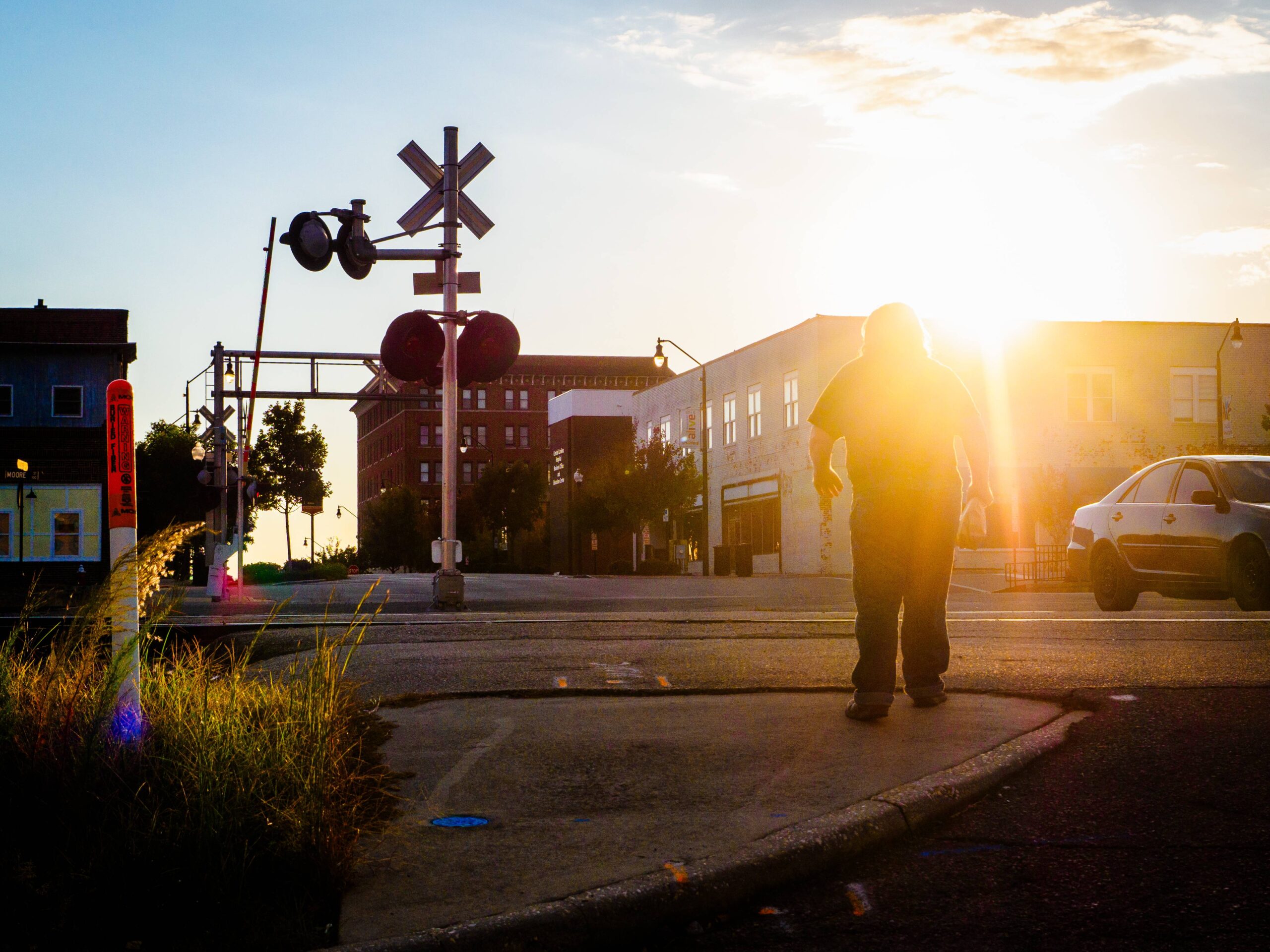 Among the findings of the group:
Among the findings of the group:
Grassroots organization is critical: The best transportation projects are locally owned and supported. Grassroots work is one of the most powerful tools cities can leverage to boost the state’s competitiveness for federal grants and energize local communities around the possibilities and potential benefits of intercity passenger rail. Community forums, local programming, and canvassing are a few examples of how city officials can educate residents on intercity passenger rail and proactively garner support and enthusiasm for development or expansion of intercity passenger rail services in their community.
Mayors are most powerful as a collective: Mayors have more power as a group than they do singularly. Transportation across city and county lines; forging connections with mayors in surrounding communities and across the state not only demonstrates a common interest in the expansion of intercity passenger rail, but also creates the opportunity for the holistic development of rail networks within the communities.
Communication is key: Establishing open communication with constituents, city council, staff, neighboring communities, and the North Carolina Department of Transportation ensures continuity, transparency, and cohesion across all levels of government. Cross-functional alliances and communication create opportunities for collaboration on complex issues like intercity passenger rail where success depends, not only on a unified understanding of the issue and the solution offered, but on significant resources and financial contributions from all persons at the table.
Dedicated funding from state government can boost local efforts: A dedicated stream of recurring dollars from the state can bolster that state’s competitiveness for federal grants and create a stable investment in intercity passenger rail for years to come. Maintaining consistent communication with legislators and extending invitations for them to interact in your communities first-hand helps build meaningful working relationships that may prove beneficial when advocating for dedicated funding sources. It is always helpful to take any opportunity to leverage, research, data, and anecdotes to inform legislators of the public benefits of intercity passenger rail and how a state investment in the expansion of services will have positive economic and social benefits statewide.
Those first three findings fit well the accomplishments of the five regional Rail Response meetings.
At each, municipal officials and community leaders heard an overview of current passenger rail in the state and the possibilities of additional funding through the bipartisan infrastructure bill.
The legislation includes $66 billion in passenger and freight rail infrastructure investment, with $44 billion to be distributed through the Federal Railroad Administration’s discretionary grant program.
As a part of the planning process, the NC Department of Transportation has applied for 13 planning grants of $500,000, each corresponding to proposals to connect more North Carolina cities by passenger rail or make improvements to existing routes.
Currently, 16 cities in the state are served by passenger rail service. The Piedmont and Carolinian trains, part of North Carolina’s Amtrak service, each make a morning and evening run between Raleigh and Charlotte. The trains stop in Cary, Durham, Burlington, Greensboro, High Point, Salisbury, and Kannapolis. The Carolinian also makes stops in Selma, Wilson, and Rocky Mount in the eastern part of the state.
NC By Train, the state’s Amtrak intercity passenger rail service, posted its highest total ridership in 2022 with more than 522,000 passengers using the service.
The state’s goal is to eventually connect cities and towns from the coast to the mountains, from Wilmington to Asheville, with passenger rail service and to see those numbers climb even more.
The final stop for the Rail Response meetings, held at the restored and majestic Salisbury historic train depot in October, was perhaps the most dramatic. With local news cameras rolling, Amtrak CEO Stephen Gardner arrived by train as the meeting got underway.
“We are going to be investing the most that we have ever invested in the network,” Gardner told attendees. “We are here to support your vision.”
He also discussed the importance of efforts like Rail Response.
“I want to say how important it is for communities to come together and express how important this is, not only to NCDOT but to your legislators,” Gardner said.
While Gardner’s participation in the final meeting may have provided fireworks, all five events attracted key community support. All saw local mayors or others writing in their local newspapers about the importance of the effort. All included key community partners like local chambers of commerce.
The effort should pay dividends as the process of intercity passenger rail expansion moves forward across the country and grants are awarded for that expanded service.
The effort should pay dividends as the process of intercity passenger rail expansion moves forward across the country and grants are awarded for that expanded service.


